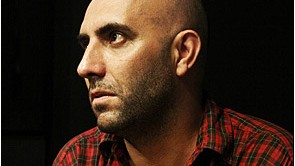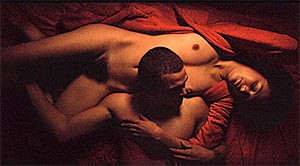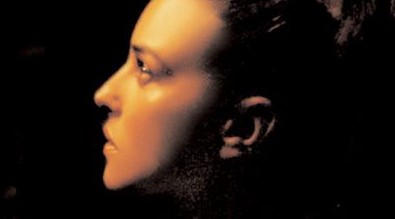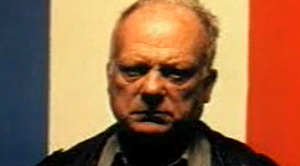
Gaspar Noé, European Graduate School EGS
What they wish to find is that their theory is wrong. They do not wish to hate their fellow man because they would in the end have to hate themselves. They want to find the good. They create works of such ugliness to try and find the beauty. They sledgehammer their viewers with the stuff of nightmares searching for a single final result. If they can fail they will paradoxically succeed. If people would just not come, if they would just ignore the brutality then these artists could finally have faith. Their greatest accomplishment would come when everyone would make them anonymous.
Gaspar Noé is one of these artists. Noe’s films are shocking and brutal. They show the world of incest, rape, violence, murder and death. His films disgust, upset, and nauseate audiences. You do not watch from a comfortable place in your seat. Noé challenges your ability to keep down your lunch. Many critics and laymen have left his movies feeling dizzy, disorientated, nauseous, and angry.

Gaspar Noé, Irreversible
Gaspar Noé does not want you to stay for his movies. He wants you to leave. He uses various techniques to achieve this result. On the surface, he states he wants to challenge his audiences. He called many theatre goers at the screening of Irréversible in France wimps:
“At Cannes, people ran away, people fainted, people threw up, but they were all just a bunch of wimps. I’m sure it’ll be different here in London, because I heard you people were really tough around here. So we’ll see all of you at the end of the movie; except maybe a few of you we’ll check the names. Bye. Courage” – National Film Theatre on the 11 October 2002.
But lying underneath is Gaspar Noé’s true purpose. He is on a search for the true nature of man. In various interviews he has stated that the films such as Sam Peckinpah’s Straw Dogs, Gerald Kargl’s Angst, and Roman Polanski’s Repulsion, were films he has been influenced by. Seeing these film, all depicting the brutality of rape, has brought out a fascination in Gaspar Noé; an inner nature of blackness that has made him question his ideas on what is good in himself and man as a whole. Why are people so drawn to rape films? Why do they come to theatres to watch?
By adding to the canon of rape films [with Irréversible], which include others such as Wes Craven’s Last House on the Left, Paul Verhoeven’s Flesh & Blood, Takeshi Miike’s Graveyard Honor Stanley Kubrick’s A Clockwork Orange and Jonathan Kaplan’s The Accused, to name a few, Gaspar Noé has decided to up the stakes. Not only will he show you a rape, but he will bombard you with a slew of techniques to make you so uncomfortable, you will have no choice but to leave the theatre.
Gaspar Noé begins Irréversible with opening credits that flash and pulsate. If you are epeleptic this can induce seizures, for everyone else it can cause headaches. The reverberated music is repulsive to the ear and sets you up for the opening ten minute shot at an undeground gay bar. Using a hand held camera that jumps and moves and lighting that flashes red and black depicting men masturbating and having violent sexual encounters, Gaspar Noé both disgusts and disorientates you. But it doesn’t stop there. If you have fought off nausia to continue watching you now have to contend with the brutality of watching a man being killed when his head is repeatedly pounded to pulp with the business end of a fire extiguisher. All the while, Gaspar Noé has employed a sonic technique used by riot police to disperse violent mobs:
“You can have a physical reaction to the movie, too. Even on the soundtrack, we added these really low waves, infra-waves, so that during the first half of the movie you have a 27-herz frequency that’s usually used in riots to make people run away. So for the first half of the movie you feel weird you could show just a cat drinking milk, and it’d be scary, and you wouldn’t know why but it’s because of this infra-wave beneath.” – 2002 BFI interview with Hannah Magill






Stay Connected